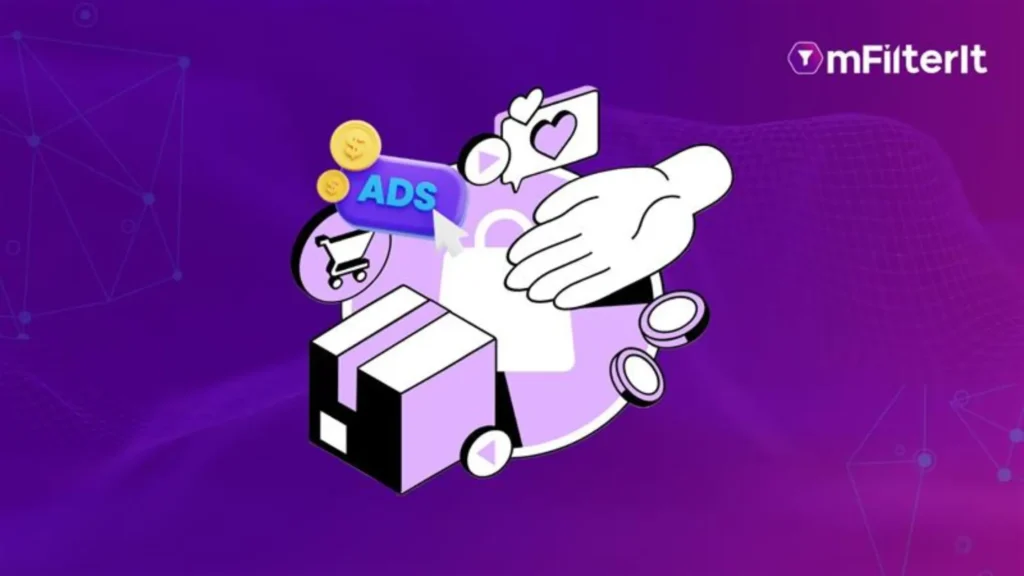Would you pay twice for the same customer? Many brands do—without knowing.
Every time your top-of-funnel campaigns drive branded search traffic, affiliates and ad networks are watching. Some quietly bid on your brand name, intercept clicks meant for your site, and take credit for conversions they didn’t create. You pay once to generate the intent. Then again, as a commission on your traffic.
During high-demand seasons, this problem scales fast. CPCs rise, ROAS drops, and budget burns faster than it should. Most marketers chalk it up to increased competition. But the real threat is invisible: brand bidding by partners you’re already working with.
This guide breaks down exactly how affiliate brand bidding works, how it distorts your campaign performance, and what to do to stop it in real time—before it eats into your seasonal results.
Why High-Demand Seasons Invite Brand Bidding
Top-of-funnel campaigns aren’t just good at driving awareness. They spike branded search queries. As performance teams push seasonal offers through social ads, influencer drops, or email blasts, users start googling the brand directly. That’s the window affiliates and ad networks wait for.
They target your brand name because these aren’t rivals or fakes. They’re your own affiliate partners, coupon sites, or arbitrage platforms.
Here’s how it happens:
· Coupon aggregators bid on your brand plus terms like “discount” or “promo” to catch deal-hunters. Even if you don’t work with them directly, many ride through indirect affiliate links.
· Automated bidding tools used by partner platforms use dynamic scripts to spot trending queries—your brand being one of them during a big campaign.
· PPC arbitrage networks snap up brand terms at scale and send users through a redirect maze, taking a cut of the conversion while inflating your CPCs.
The result: you end up paying twice. First to generate the intent. Then to win it back from your own partners.
hey know the intent is hot. Their ads show up right above or next to yours, competing for the same clicks you’ve already paid to generate
Signs You’re Losing Budget to Brand Bidders
Brand bidding often hides behind metrics that appear healthy at first glance. But dig deeper, and patterns start to emerge—especially during high-demand campaigns. These are the most reliable indicators that your branded traffic is being hijacked by affiliates or ad networks.
Sudden Branded CPC Spikes During Campaigns
If your branded search CPCs climb sharply during a sale or new product drop, and you haven’t changed your strategy, it’s likely external bidders have entered the auction. Affiliates or partner platforms may be targeting your brand keywords This shifts you from low-competition bids into competitive territory, inflating costs by 20–30% or more. You’re now competing for traffic you already created.
Drop in ROAS Despite a Stable Media Strategy
ROAS should stay consistent when targeting, creative, and user intent remain steady. If it drops without a clear cause, CPC inflation from brand bidding may be the culprit. You’re still getting conversions, but at a higher acquisition cost—and sometimes paying an unnecessary commission on top of it. This directly reduces your return.
Performance Plateaus as Spend Increases
You increase your media budget expecting higher conversions, but results don’t scale. That’s a sign your campaign isn’t reaching more users—it’s just paying more for the same
ones. Bidding partners can drain your daily budget early in the day, especially if their tools ramp up aggressively on trending brand terms. Your budget runs out before the day’s highest-intent traffic arrives.
Affiliate Reports Show High Last-Click Wins on Branded Terms
If affiliates suddenly show strong performance from last-click conversions and branded queries, take a closer look. Partners who haven’t changed tactics but start claiming more conversions may be targeting your brand name.
Campaign Budgets Exhaust Early in the Day
Brand bidding drives up CPCs quietly. When that happens, your campaign spend gets used up faster. If your branded campaigns go offline by afternoon, it’s not just strong demand—it could be your own partners outbidding you, forcing premature pauses in delivery during critical traffic windows.
Traffic or Click Surges in Irregular Geographies
If affiliate-referred traffic starts showing higher CTRs from regions not aligned with your core market, this could be automated bidding behavior. Some arbitrage networks use scripts to scoop up branded traffic wherever they can find it, regardless of quality or location. These patterns waste spend without contributing meaningful conversions.
Spotting these signals early gives you the chance to stop CPC leakage before it spirals. Passive monitoring doesn’t cut it during peak periods—especially when brand bidders are watching your campaigns as closely as you are.
The Real Cost of Ignoring Brand Bidding During Peak Periods
When brand bidding by affiliates or ad networks goes unchecked, the damage isn’t just in a few lost clicks. It hits multiple layers of your performance stack.
· CPC inflation from competitive auctions Branded keywords typically deliver high ROI due to lower CPCs and stronger intent. But during high-demand periods—sales, product launches, festivals—affiliate partners and coupon sites often start bidding on those same keywords. This competition drives up the auction price. Brands that normally pay ₹4–5 per click may suddenly pay ₹6–7 for the same traffic. That’s a 25–30% increase in acquisition cost without a corresponding lift in quality or volume.
· Paying twice for the same user. First, you run TOF campaigns to build intent—think influencer reels, paid social, email, SMS. Then, that user searches for your brand. If an affiliate’s ad appears above yours and gets the click, you pay again in the form of a commission. That’s media spend plus affiliate payout for a single conversion. It erodes the margin and misrepresents channel efficiency.
· Attribution distortion. Most brands rely on last-click attribution models. Affiliates and arbitrage platforms know this. They aim to be the last touchpoint by intercepting brand searches. This hijacks credit from the real performance drivers, like your paid social or content efforts. Over time, this distorts media performance data, leading to misallocated budgets.
· Faster budget exhaustion. Higher CPCs mean your daily budget hits the ceiling quicker. Campaigns pause midday, leading to missed traffic windows and reduced overall reach. With inflated acquisition costs and lower ROAS, marketers lose room to scale during periods when volume is actually within reach.
Case in point: Foxtale’s 21% CPC Optimization
During a festive sale, Foxtale noticed a sharp increase in CPCs on its branded keywords despite no major strategy shift. mFilterIt’s real-time monitoring detected multiple affiliate networks bidding on those keywords without approval. These were not competitors but ad networks funneling traffic through coupon and cashback offers.
After validating the activity, Foxtale moved fast to restrict bidding access and block unauthorized traffic. In 72 hours, branded CPCs dropped by 21%, and the brand rechanneled that saved budget into higher-performing campaigns.
To read the full case study: Click Here
This isn’t rare. Any brand with active TOF and affiliate programs is exposed, especially during peak demand cycles.
How to Regain Control— A Tactical Checklist

Once brand bidding is detected, response time is everything. CPCs escalate fast, and damage spreads across performance and attribution. These actions let you take back control without pausing campaigns or sacrificing scale. Here’s how to regain control and the checklist to follow:
1. Real-Time Monitoring
The first step is visibility. Most brands only discover keyword hijacking after reviewing post-campaign metrics. That’s too late. In brand bidding affiliate marketing, affiliates or partner networks bid on your brand keywords to intercept high-intent traffic.
Real-time monitoring tools like Effcent by mFilterIt track who is bidding on your brand keywords across platforms—daily. They identify which networks or affiliates are entering auctions, which keywords they’re targeting, and where the bids are coming from. This lets you act before a single extra rupee is spent.
Geo-specific tracking is critical here. Many affiliate platforms use country-agnostic scripts. You may see brand bidding coming from locations where you don’t even operate. Without detection by region, those patterns go unnoticed and keep draining the budget quietly.
2. Daily Reporting & Alerts
Once brand bidding is spotted, a delay in response creates compounding costs. mFilterIt’s daily insight reports push performance marketers the data they need to act fast: keyword abuse, traffic anomalies—all bundled into short, actionable updates.
These alerts help detect keyword bidding abuse early, reducing the lag between detection and action. Without this layer, even known issues can take days to resolve across multiple teams and platforms. Early alerts prevent minor leakages from snowballing into multi-lakh losses. This isn’t just a reporting layer—it’s a live ad fraud solution purpose-built for affiliate programs.
3. Affiliate Payout Optimization
Not every affiliate should be paid for a conversion that came from a brand keyword. Implement keyword-level restrictions in your affiliate program to reduce payout exposure. If a conversion originates from a brand term search and not from new demand creation, it doesn’t warrant commission. EffCent by mFilterIt lets brands monitor affiliate behavior beyond last-click metrics. It helps validate actual influence—whether the affiliate drove intent or intercepted it. With that clarity, you can redesign your payout structure around real value, not inflated volume caused by affiliate brand bidding.
4. Search Strategy Adjustment
One of the fastest tactical defenses is adjusting how you structure your own campaigns. Increase your branded keyword density with exact match campaigns that defend core terms. Use brand exclusions in performance campaigns for networks or platforms known to overstep.
Many marketers also implement automated rules that pause or flag campaigns bidding on blacklisted keyword sets. These can run within your internal PPC setup or be synced with external monitoring tools. This level of control also helps you define what brand bidding is in affiliate marketing, not just in theory, but in daily practice. Defense doesn’t always mean outbidding. Sometimes, it’s about cutting them off before the bid.
Strategic Planning Ahead of Seasonal Campaigns
Peak season is when brand bidding hits hardest. Affiliates ramp up efforts to capitalize on higher search volume and laxer oversight. That’s why brand protection needs to be part of your pre-campaign planning, not a post-crisis patch.
Make brand keyword defense part of your playbook
Just like creative strategy and performance budgeting, brand protection should be formalized in the seasonal rollout plan. Define which brand keywords are off-limits. Set up escalation paths if violations are detected. Pre-authorize campaign rules across all ad platforms so intervention doesn’t slow down live campaigns.
Integrate affiliate brand bidding tools at this stage to set monitoring thresholds in advance. This allows you to baseline expected brand traffic and detect manipulation instantly when campaigns go live.
Align internal teams before campaigns launch
Brand bidding isn’t just a media issue. It intersects performance, partnerships, and legal. Before launch, ensure all three teams are aligned:
· Performance knows what to track and when to flag anomalies
· Partnerships know how to enforce affiliate restrictions or issue takedowns
· Legal can act quickly on trademark abuse or unauthorized ads using your brand
This reduces response lag, ensures no one’s duplicating efforts, and helps recover spend faster.
Audit affiliate contracts and partner platforms
Seasonal surges are when affiliate programs get exploited the most. Many brands work with networks that pass traffic through multiple sub-affiliates. In these cases, brand bidding often comes from layers you don’t directly control.
Run a pre-season audit using affiliate monitoring tools like Effcent, which evaluates the traffic generated from a particular affiliate. creator and affiliate behavior tied to your brand.
Update contracts to include clear clauses around brand keyword restrictions, penalties for violations, and compliance triggers tied to payout eligibility.
Using Affiliate Fraud Detection to Run Trusted Affiliate Programs Safer
Brand bidding isn’t an accident. It’s a known risk that shows up every time your campaigns drive demand. And during high-traffic periods, that risk multiplies.
What makes the difference is how fast you see it—and how you act.
With tools like EffCent, mFilterIt gives performance marketers the ability to track, flag, and eliminate affiliate brand bidding before it eats into ROI. It’s not about blocking all affiliates. It’s about spotting the ones hijacking brand traffic and filtering them out in real time.
Because smart marketers don’t just increase budgets during sales, they protect them.
So before your next seasonal push, ask one question: Is your CPC rising because of real demand, or artificial competition?
Contact us today to protect your brand and start reclaiming your budget.




